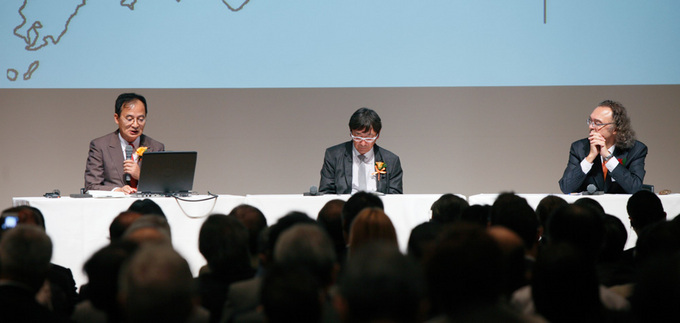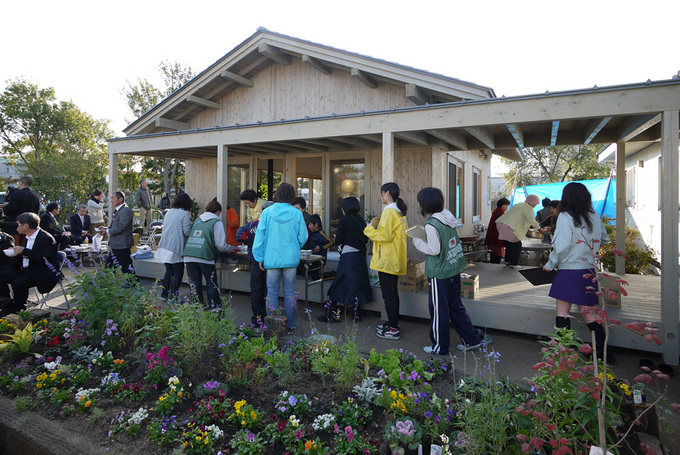Rebuilding Japan's Fuudo (natural environment with cultural background)--Reconstruction from the Great East Japan Earthquake considered from the viewpoint of Fuudo
Augustin Berque (Professor, Retired, School of Advanced Studies in the Social Sciences)
Toyo Ito (Architect)
Furamu Kitagawa (Art Director)
Professor Augustin Berque, known as author of Les Japonais Devant La Nature and Ecoumene: Introduction a letude des milieux humains, received the Japan Foundation's Grand Prize in 2011 in the field of Japanese studies and intellectual exchanges. On October 11, 2011, the day of the award ceremony, a symposium was held in Tokyo on "Reconstruction of Japan's Fuudo" to commemorate the retired professor's winning of the prize. Architect Toyo Ito and art director Furamu Kitagawa joined the discussion. The following is a report on the symposium.
Fuudo cannot be separated from historicity
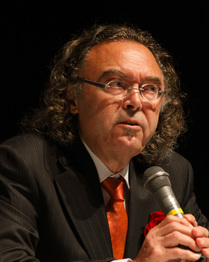 BERQUE: I would like to start by quoting a Japanese proverb on Fuudo, which I am studying. And the proverb goes like this: "It takes 10 years to create scenery, 100 years to create a landscape, and 1,000 years to create Fuudo." I am not studying Fuudo on the scale of 1,000 years alone, but I am also interested in scenery and landscapes. I believe the tsunami caused by the massive earthquake this year and the subsequent nuclear power plant accident were occurrences on the level of Fuudo in both space and time. You may be wondering if you can rebuild Fuudo and, if you are going to rebuild and restore it, how do you go about doing it. You may be wondering, indeed, if it is possible not only to repair the damage but also to reconstruct or revitalize the region.
BERQUE: I would like to start by quoting a Japanese proverb on Fuudo, which I am studying. And the proverb goes like this: "It takes 10 years to create scenery, 100 years to create a landscape, and 1,000 years to create Fuudo." I am not studying Fuudo on the scale of 1,000 years alone, but I am also interested in scenery and landscapes. I believe the tsunami caused by the massive earthquake this year and the subsequent nuclear power plant accident were occurrences on the level of Fuudo in both space and time. You may be wondering if you can rebuild Fuudo and, if you are going to rebuild and restore it, how do you go about doing it. You may be wondering, indeed, if it is possible not only to repair the damage but also to reconstruct or revitalize the region.
First, I think we have to proceed with the assumption that Fuudo is a living thing. Fuudo is not only an object--in other words, land and climate--but Fuudo is also the history of people who live in it. People joined with other living creatures have historically created Fuudo. Therefore we cannot separate historicity when considering Fuudo. Fuudo and historicity interacting with each other move historically in a certain direction. In which direction they move is significant for people. I say "for people" because Fuudo is a complex that combines technical systems and symbolism that people have created and kept alive within the ecological systems, and that complex is alive.
We cannot predict what will happen to Fuudo in the future, even if we manage to recreate it. It is not a machine. But I think we can safely predict its future to a certain degree. History is our standard for thinking about the future. In order to rebuild Fuudo, we first have to remember our history. But people in the modern age tend to forget history, or they have a strong tendency to ignore it. They are heavily inclined to make things anew on a clean sheet of paper, or tabula rasa (a white stone slab) in Latin. This is the spirit of the modern age itself. It is clear that this spirit has led Japan to the situation in which it finds itself today. I think Japan has to change this attitude and rediscover its history. Only then can it revive Fuudo.
The Great East Japan Earthquake shows the limit to modernistic thoughts
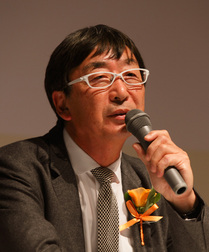 ITO: I was influenced by Formes urbaines et lien social au Japan written by Professor Berque while he was still living in Japan. Sendai Mediatheque, which I designed, opened exactly 10 years ago, but it was damaged by the earthquake in March. I helped repair it while the cultural complex was closed for two months, and that gave me many opportunities to visit Tohoku. I have frequently visited Sendai, but I had never traveled the Sanriku region that sustained especially heavy damage. So I set foot in the area for the first time in my life after the disaster. I had never witnessed a scene like that in Japan. Today, I frequently go to Kamaishi City in Iwate Prefecture. I get off the train at Shin-Hanamaki Station on the Tohoku Shinkansen line and pass through a truly beautiful area called Tono by car. You can see wonderful old Japanese farm houses built in the Magari-ya style (with the main house and stable forming an L shape). And the terraced paddy fields are also very beautiful. But I can't call Kamaishi itself beautiful. There are beautiful towns that have developed around castles. And there are villages that people have built centered on rice paddies and fields. Kamaishi is neither of these. The city of Kamaishi has many small harbors along its jagged coastline, and scores of houses, more than 100 of them, cling to each of these harbors. People there have always lived close to the ocean, but there is no center. Originally the area consisted of fishing villages. Today, however, small plants and factories are scattered around, along with a few private houses. I asked myself, what is this? And I realized that they form the so-called suburbs. Major cities in Japan have suburbs and we often see distressing scenes. People in Tohoku may express anger when I say this, but the area looks very much like one of those suburban scenes.
ITO: I was influenced by Formes urbaines et lien social au Japan written by Professor Berque while he was still living in Japan. Sendai Mediatheque, which I designed, opened exactly 10 years ago, but it was damaged by the earthquake in March. I helped repair it while the cultural complex was closed for two months, and that gave me many opportunities to visit Tohoku. I have frequently visited Sendai, but I had never traveled the Sanriku region that sustained especially heavy damage. So I set foot in the area for the first time in my life after the disaster. I had never witnessed a scene like that in Japan. Today, I frequently go to Kamaishi City in Iwate Prefecture. I get off the train at Shin-Hanamaki Station on the Tohoku Shinkansen line and pass through a truly beautiful area called Tono by car. You can see wonderful old Japanese farm houses built in the Magari-ya style (with the main house and stable forming an L shape). And the terraced paddy fields are also very beautiful. But I can't call Kamaishi itself beautiful. There are beautiful towns that have developed around castles. And there are villages that people have built centered on rice paddies and fields. Kamaishi is neither of these. The city of Kamaishi has many small harbors along its jagged coastline, and scores of houses, more than 100 of them, cling to each of these harbors. People there have always lived close to the ocean, but there is no center. Originally the area consisted of fishing villages. Today, however, small plants and factories are scattered around, along with a few private houses. I asked myself, what is this? And I realized that they form the so-called suburbs. Major cities in Japan have suburbs and we often see distressing scenes. People in Tohoku may express anger when I say this, but the area looks very much like one of those suburban scenes.
The ocean and hills have been maintained, however, and because transportation systems have not been fully developed, there are still scenes in the Sanriku region that will surprise you and make you think, "I didn't know there are still places like this in Japan." There are no such places in Okinawa or Hokkaido. I have been trying to figure out what all this means.
This time I talked with the local people again and again. Many people had prepared for a tsunami, thinking one would come sooner or later. Yet, the tsunami in March inflicted devastating damage. One of the reasons for this was the storm surge barriers, and I don't mean that they weren't high enough. What I mean is that the myth among the people that they would be safe because of the barriers led unfortunately to enormous man-made damage.
People often say the tsunami was a natural disaster and the nuclear power plant accident a man-made disaster. But I think both disasters were caused by human error. People set up a border along a single storm surge barrier and decided they would be safe because they lived on one side of the barrier with nature on the other side. Likewise, an opaque, giant box was placed over the nuclear power plant, and people pretended they were safe as long as they stayed outside the box. Both of them, the storm surge barriers and the nuclear plant, easily suffered damage during the disaster. Come to think of it, we architects are designing modern buildings based on exactly the same idea. People think they can live in the best of environments if they just draw a line between nature and themselves, and stay smugly on their own side. I think that idea fundamentally collapsed this time. People in local communities are now thinking that they should build three lines because one line was not enough to protect them. But things will remain the same in the end. What needs to change is this "modern" way of thinking. I think we could have prevented such a devastating disaster if people had only thought that nature was something they should fear, and if they had only been humble enough to ask nature to allow them to live where they are. I think the biggest challenge facing us today is how to incorporate such ideas into our reconstruction plans. So the question is, can we weave the ideas of local residents into community projects and restore the kind of towns that can build a better relationship with nature, even if only slightly better. So this is not just about me giving support to the Tohoku region. I think this is an issue that I personally, and we architects collectively, should address.
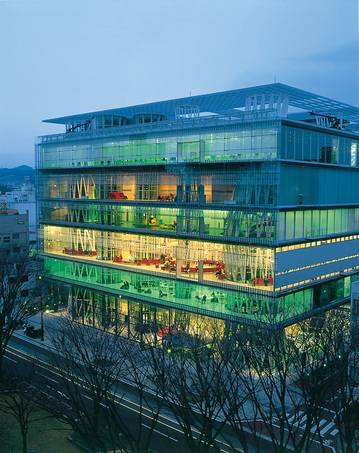
Sendai Mediatheque, Courtesy of the Tourist Board, Miyagi Prefecture
The arts will revitalize hollowed out areas
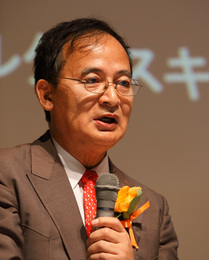 KITAGAWA: I have been working since 1996 in an area called Echigo-tsumari, along the border between Niigata and Nagano prefectures, mainly around the city of Toka-machi. Since 2000, we have been holding the Echigo-tsumari Art Triennial every three years, and since 2006, we have also been trying to revitalize the islands in the Seto Inland Sea through the Setouchi International Art Festival. Here I would like to talk about our activities in Echigo-tsumari.
KITAGAWA: I have been working since 1996 in an area called Echigo-tsumari, along the border between Niigata and Nagano prefectures, mainly around the city of Toka-machi. Since 2000, we have been holding the Echigo-tsumari Art Triennial every three years, and since 2006, we have also been trying to revitalize the islands in the Seto Inland Sea through the Setouchi International Art Festival. Here I would like to talk about our activities in Echigo-tsumari.
This region was once called "Akiyama-go," and it includes areas that were exempt from the country's compulsory education system during the Showa years. In other words, children in these areas were unable to go to school even if they wanted to. These areas where more than 30,000 people are engaged in farming receive the heaviest snowfall in the world. The land was formed by the flooding of the Shinano River and the land is forested as well. People have been living here since ancient times, and the Sasayama remains in Toka-machi date back about 4,500 years to the mid-Jomon Period. The 928 items unearthed from the remains are designated as the oldest national treasures in Japan. As modernization in Japan progressed, young workers migrated from rural areas to the nation's cities. Japan has abandoned its agriculture, and the government today is encouraging people to move to cities, even from those districts that are trying to continue farming by cultivating terraced and other kinds of fields, saying this type of agriculture is no longer efficient. But this area had the largest population in Japan at the beginning of the Meiji Era and produced the largest rice harvest despite difficult conditions. It is now hollowing out and suffering crippling damage. Nearly 20% of the elderly residents think their sons will return home only to attend their funeral. How can we bring hope to people in an area like this? That's where we started.
We developed the concept that "people are surrounded by nature." It would be presumptuous to say we coexist with nature. We thought only in the flow of nature can we live, and on the basis of this concept we tried to breathe new life into the area.
Echigo-tsumari has suffered three disasters this year. First we had extremely heavy snowfalls in January. Then on March 13, an earthquake struck the border area between Niigata and Nagano prefectures. The Fossa Magna runs through this area and this quake was linked to the March 11 disaster. And again, we had flooding after torrential rains on July 28. The area has always been a disaster-prone and people have adapted to nature as they live. In that sense, the important thing is to revitalize the area while considering how to deal with nature.
We ask visitors to take a look at how people live in the area, including their terraced fields, and they congratulate and encourage the local people, who in turn become confident of their way of life. That's our purpose. It is great to have a lot of visitors, but tourism is only a means. What we are really hoping is to see smiles on the faces of old people in the area, grandmas and grandpas, and to see that the local residents are feeling happy about themselves.
Let me give you a quick introduction to the works we have in Echigo-tsumari. After the major earthquake in 2004, architect Dominique Perrault took part in a project to improve the parks. We built a park along a river where industrial waste had been dumped. A reflective material was used on the roof over the Noh stage called the Butterfly Pavilion, and the roof reflects scenes that change minute by minute around the pavilion.
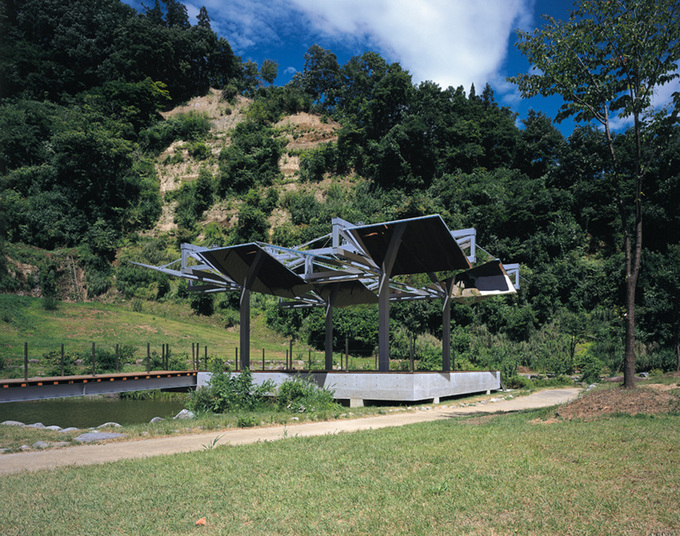
Butterfly Pavilion by Dominique Perrault, Photo: Takubo Kuratani
In Les Linges by Christian Boldanski, old clothes are placed at equal intervals in a 1-hectare field. The way these old clothes sway and flutter in the wind seems to reveal the souls of not only the people who have died in the village, but also those who had no choice but to leave the place.
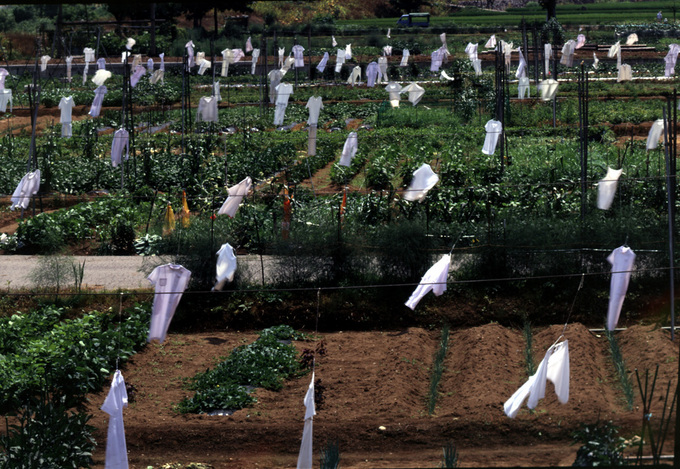
Les Linges by Christian Boldanski (2000 Echigo-tsumari Art Triennial work), Photo: Shigeo Anzai
Revitalization of an area means that we show all assets there, not only assets that we consider a plus today, but also those that could be a minus, and show what all the resources there represent. So we are focusing our efforts on the reconstruction of abandoned houses and school buildings. Boldanski's Last Class sustained considerable damage this time, but we feel that our activity means at least one hope for the people in the area. There is nothing we can do to prevent a school from closing, but we thought we should put the school building to some use, at least.
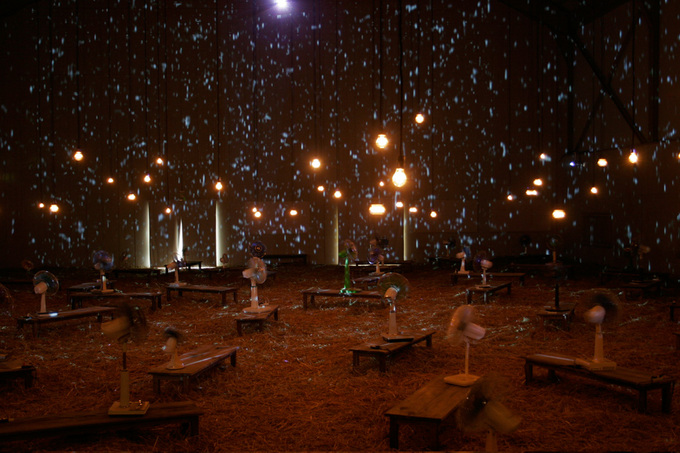
The Last Class by Christian Boldanski & Jean Kalman, Photo: Takubo Kuratani
Between late last year and this spring, the local people shoveled snow off their roofs eight times on average. If the roofs do not take care of for two consecutive winters, they will cave in and weeds will start growing. We had to somehow make use of those places, so architects and artists went in and turned them into galleries and small museums. We have done this with about 20 schools and 40 private houses. One example is a house that was heavily damaged in a powerful earthquake in 2004. Eight pottery artists built a Shigaraki-yaki bathtub and an Oribe-yaki oven inside the house. They rebuilt the house with new pillars and beams, and the local people are now using it as a community hall or a place to stay.
The arts are not the only thing that is important, so are the local dishes prepared by women in the area. Local people are running restaurants, serving dishes made with indigenous grasses, vegetables, mushrooms and other ingredients. Doing these things they can go on living while somehow managing to protect their community or village.
We have discovered several things during our activities. For instance, making use of locally inherent assets sharply steps up interchanges with urban areas. Not only specialists and young people, but people in cities in general want to get involved in activities in rural areas. About 1,000 people in Echigo-tsumari and 3,000 people in Setouchi have signed up for our program and are coming from Tokyo, Yokohama, Osaka and other cities to help out.
Niigata was once known as the "Country of Koshi," and was historically an area to where people who ran afoul in central Japan were banished. The area, therefore, had no other way to survive but to accept people from outside. We have launched a project to revitalize this area by discouraging people from migrating to Tokyo and other major cities, though we still have a long way to go.
Various works of art sustained damage in the disasters this year. What we have been able to do, gradually, in Echigo-tsumari is to help out the local people, return the town to normal as much as possible, and rebuild it for the sake of the Echigo-tsumari Art Triennial. At the same time, we have been trying to connect the area with distant cities and towns. First, we are planning to hold a summer camp for people in the Tohoku region who suffered from the March disaster. We are doing this and other things hoping that people in both urban and rural areas will intermingle and share some good times.
Fuudo is important for both physical and spiritual levels
BERQUE: Continuing with what Kitagawa-san said, I went to see the Echigo-tsumari Art Triennial in 2000. It was the first year of the art festival. I could not make it during the summer when artists were there and I had to wait until the fall. Many people had already left when I got there, and I felt as if I had gone back to the country. At that time, I was worried about the future, wondering if the arts would really be able to revitalize the local economy and life. It is reassuring to hear today that the number of visitors has been gradually increasing, that Tsumari is becoming better-known, and that the economy is beginning to recover.
I think when it comes right down to it, Fuudo in which people live has an intrinsic value. If we can take advantage of the creative powers of people, it will become a catalyst for bringing about change in history.
Turning to the reconstruction of the Tohoku region, when we talk about a specific foundation of life, we start talking first about construction work. This is exactly the case with national land development. But Kitagawa-san says art, or the spirit, is the starting point, and this is an approach that has never been tried before and upends the traditional concept.
The word Fuudo means wind and earth. In other words, there are both a physical side and a spiritual side to Fuudo. The spiritual dimension is also important. When we think about the real meaning of Fuudo, I think we should simultaneously pursue both the physical and spiritual approaches.
And the third thing we should not forget is the bodily dimension. We talked about the local cooking a little while ago, but we should rediscover the way of life itself.
I was impressed by Ito-san's story about man-made and natural disasters. A tsunami is a natural disaster, of course, but the damage also invariably includes man-made errors. The disaster in March makes this very clear. Because the nuclear plant accident followed the tsunami, we can also call this Fuudo.
Fuudo refers not only to its physical dimension. Its meaning extends to the spiritual side through the lives of people, their bodies, and their feelings.
This is an idea that has existed since the beginning of the concepts of fukei, or scenery, and san-sui, or hills and waters. A painter named Sung Ping lived during the Six Dynasties Period in China. For the first time in the world he wrote theses on the landscape and on hills and waters. At the beginning of his thesis on hills and waters he says, "Regarding hills and waters, they possess a form and embody a spirit." The word "shitsu" in his writing refers to a physical form. Fuudo means physical land, but that's not all. It is people who turn the land into Fuudo, and in it lies a way of living and the mode of people's lives that captures in a certain way the essence of "do," or "fu."
The word "fu" has many meanings. One of them is "style," as in doing something in "Japanese style" or "French style." This means exactly the mode of life, or the culture itself. Fuudo means how people live, how they feel, and how they think about their land, including its spirituality. I am looking forward to finding how people in the future think about the land called Japan, and I am counting on their powers of imagination.
Maintaining the community is the key to reconstruction
ITO: In my interpretation of Fuudo, the Japanese word tochi-gara, or the nature of the locality, would best describe it. In other words, what kind of people a certain locality produces and what sort of community it creates. When you visit the Sanriku region, you soon find, and quite clearly, what kind of people it has produced. In contrast, you have no such concept in Tokyo. As I said before, buildings today look the same wherever you go, in Tokyo, Sendai, Aomori--it doesn't matter where. That goes to show that those buildings are constructed with no relation to the nature of the place where they are located, and this tendency results in people living in places that are characterless. I think this is a really big problem in Japan today. The moment the disaster struck in March, everyone must have thought that it was Fuudo that produced and raised the Tohoku people. With the passage of time, however, that idea has faded and all that people talk about today is reconstruction. This is exactly what we Japanese have to consider seriously.
As Mr. Berque has pointed out, the reconstruction plans are led completely by the construction industry. In order to incorporate the will of the people into these reconstruction projects, we are conducting a very modest project, a campaign called "Everyone's House." This campaign provides places where people can come together and discuss what sort of community they want to create in the future. Five of us are behind this campaign. We are all architects: Kazuyo Sejima, Riken Yamamoto, Hiroshi Naito, Kengo Kuma, and me.
It does not matter where the house is located--in a temporary shelter in the disaster-hit region, in a shopping arcade that has sustained damage, or, we could just partition off one really tiny corner of a half-destroyed building. People can create a place where they can relax, eat together and talk about what they have to do to rebuild their community. We are hoping that such a place can become a base where the plan for reconstruction of a new town starts, and that we can create a network of such places in the country. We are aware that this is a very humble attempt, but we are doing our best, thinking that by translating our ideas into action we can change the reconstruction plans that focus just on construction and engineering projects into something else.
KITAGAWA: We see that a large part of your activity deals with the reconstruction of communities.
ITO: Yes. When you travel to that area, you can see for yourself that the communities are still there. The disaster victims have now resettled into temporary housing after living in gymnasiums and other shelters for some time. This is generally considered a step forward. In reality, however, shelters and temporary houses are completely different in character. You can maintain your community in a shelter. I have often heard elderly people say they don't want to move to a temporary house. Communities like theirs are being lost in temporary houses. That has made us think that we should build houses where people can continue to live while still maintaining their own community.
KITAGAWA: Professor Berque's books point out the importance of history, in addition to that of geographical landscape. I believe this naturally includes communities. I wonder if you could tell us what you think about communities that form the springboard in various regions of Japan.
BERQUE: We have been using words like "local characteristic" and "community." When we talk about some local characteristics, we invariably mean relations among people. But the word "community" means not only the relationship with your next door neighbors, but also the relationship between people in the past as well as those in the future.
We become human beings only when we exist in relationship with others in the past, in the present, and in the future. This is Tetsuro Watsuji's interpretation: he famously said there are two aspects of human beings--"human" and "betweenness." This "betweenness" means the fundamental human structure of relations among people. But people in the modern age are ignoring this "betweenness" and are trying to live only on the "human" level. It is not only individualism, but capitalism likewise is making us sever our bond with history and forcing us to think only about the profits of the moment.
Today, people in developed nations are maintaining lifestyles that I think are unsustainable. This is true of Japan, France and the United States. Though there is a degree of difference, they are all essentially the same. They are ignoring the teachings of history. They are ignoring the people of the future. We should rediscover the inherently fundamental human structure and remember once again that we are not just individual, separate human beings, but human beings that exist in the "betweenness."
ITO: Listening to Professor Berque now, I recall him saying in one of his books that "form" exists not only in space but also in time.
This is really important. When we think about architecture within the context of the modern age, we often think only in terms of space. We have been saying that a community of people will be created only if we set aside some sort of "space" for them, but a community in the context of "time" is extremely important when we think about architecture of the future.
KITAGAWA: Seven months have passed since the Great East Japan Earthquake. This may have been the first time since the end of World War II that people on the Japanese archipelago have almost simultaneously witnessed a major disaster. Perhaps this is a good time for us all to stop and think how we should relate ourselves to this tragedy or how we should go on living without forgetting about it.
Photo: Kenichi Aikawa
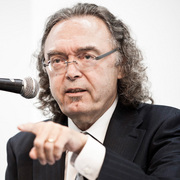 Augustin Berque, Professor, Retired, School of Advanced Studies in the Social Sciences
Augustin Berque, Professor, Retired, School of Advanced Studies in the Social Sciences
Professor Berque was born in Rabat, Morocco, in 1942. With his profound insights into the culture and Fuudo of various regions in Japan, he is one of Frances's leading Japanologist and has established his own unique theory on Fuudo. Deeply impressed by Fuudo written by Tetsuro Watsuji, he has conducted pioneering academic research on Fuudo, and not just in the sense of the natural environment. He has made great contributions to a variety of academic fields, including geology, philosophy, anthropology and Japanese studies. For four years beginning in 1984, he was director of Maison franco-japanaise in Tokyo.
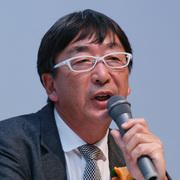 Toyo Ito, Architect
Toyo Ito, Architect
Mr. Ito was born in today's Seoul, South Korea, and graduated from the University of Tokyo's Department of Architecture. After working for the office of Kikutake Architect and Associates between 1965 and 1969, he started his own company, "Urban Robot (URBOT)," in 1971, becoming its president. In 1979, he changed the name of his company to Toyoo Ito & Associates, Architects. His major works include Sendai Mediatheque, TOD's Omotesando Building, the library of Tama Art University (Hachioji Campus), the 2009 Kaohsiung World Games Main Stadium (Taiwan), and the Toyoo Ito Museum of Architecture, Imabari. Today, construction of the Taichung Metropolitan Opera House (Taiwan) and expansion of the Barcelona Gran Via Exhibition Center (Spain) are under way. Among the awards he has received are the "Golden Lion" at the Venice Biennale (2002), the Gold Metal from the Royal Institute of British Architects (RIBA) (2006), and the 22nd Praemium Imperiale in Honor of Prince Takamatsu (2010). He will serve as commissioner of the Japanese Pavilion at the 13th Venice Biennale of Architecture to be held in the autumn of 2012.
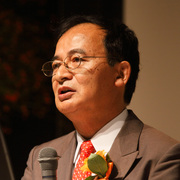 Furamu Kitagawa, Art Director
Furamu Kitagawa, Art Director
Mr. Kitagawa was born in Takata City (present Joetsu City) in 1946. He is a graduate of the Tokyo University of the Arts. He was producer of the Antoni Gaudi Exhibition (1978-1979) that paved the way for today's Gaudi boom, and he organized a "print art exhibition for children" held at 80 schools across the country (1980-1982) and an anti-apartheid international art exhibition (1988-1990) for which he mobilized 380,000 people in 194 places on a grassroots level. For rebuilding regional communities, he received awards at the Echigo-tsumari Art Triennial (7th All Right! Nippon Grand Prix [The Prime Minister's Award]), the Osaka Canal City Exhibition (2009), the 2009 Niigata Water and Earth Art Exhibition, and the 2010 Setouchi International Art Festival (for contribution toward building a maritime nation).
For his lifetime cultural activities, he was awarded the Chevailier dans l' Ordre des Arts et des Lettre from the French government. He also won the 2006 Ministry of Education Award for Fine Arts (in the category of arts promotion), the 2007 International Exchange Promotion Award/Cultural and Artistic Exchange Award, and the 2010 Kagawa Prefecture Award for Distinguished Services to Culture.
At present, he is the overall director of the Echigo-tsumari Art Triennial and Setouchi International Art Festival.
Related Events
Keywords
- Architecture
- Ethnic Group
- Arts/Contemporary Arts
- Natural Environment
- Philosophy/Religion
- History
- Art Management
- Social Community
- The Japan Foundation Awards
- Region
- Japanese Studies
- Japan
- Great East Japan Earthquake
- Reconstruction
- Fuudo
- Augustin Berque
- Toyo Ito
- Furamu Kitagawa
- Sendai Mediatheque
- Sendai
- Sanriku
- Kamaishi
- Terraced paddy field
- Tsunami
- Nuclear power plant
- Depopulation
- Echigo-tsumari
- Toka-machi
- Echigo-tsumari Art Triennial
- Setouchi International Art Festival
- Sasayama remains
- Mid Niigata Prefecture Earthquake
- Dominique Perrault
- Christian Boldanski
- Tochi-gara
- Community
- San-sui
- Sung Ping
- Mode of life
- Culture
- Tokyo
- Everyone's House
- Kazuyo Sejima
- Riken Yamamoto
- Hiroshi Naito
- Kengo Kuma
- Shelter
- Temporary house
Back Issues
- 2025.6. 9 Creating a World Tog…
- 2024.10.25 My Life in Japan, Li…
- 2024.5.24 The 50th Japan Found…
- 2024.5.24 The 50th Japan Found…
- 2024.5. 2 People-to-People Exc…
- 2024.5. 2 People-to-People Exc…
- 2023.12. 7 Movie Theaters aroun…
- 2023.6.16 The 49th Japan Found…
- 2023.4.24 The 49th Japan Found…
- 2022.12.27 Living Together with…


